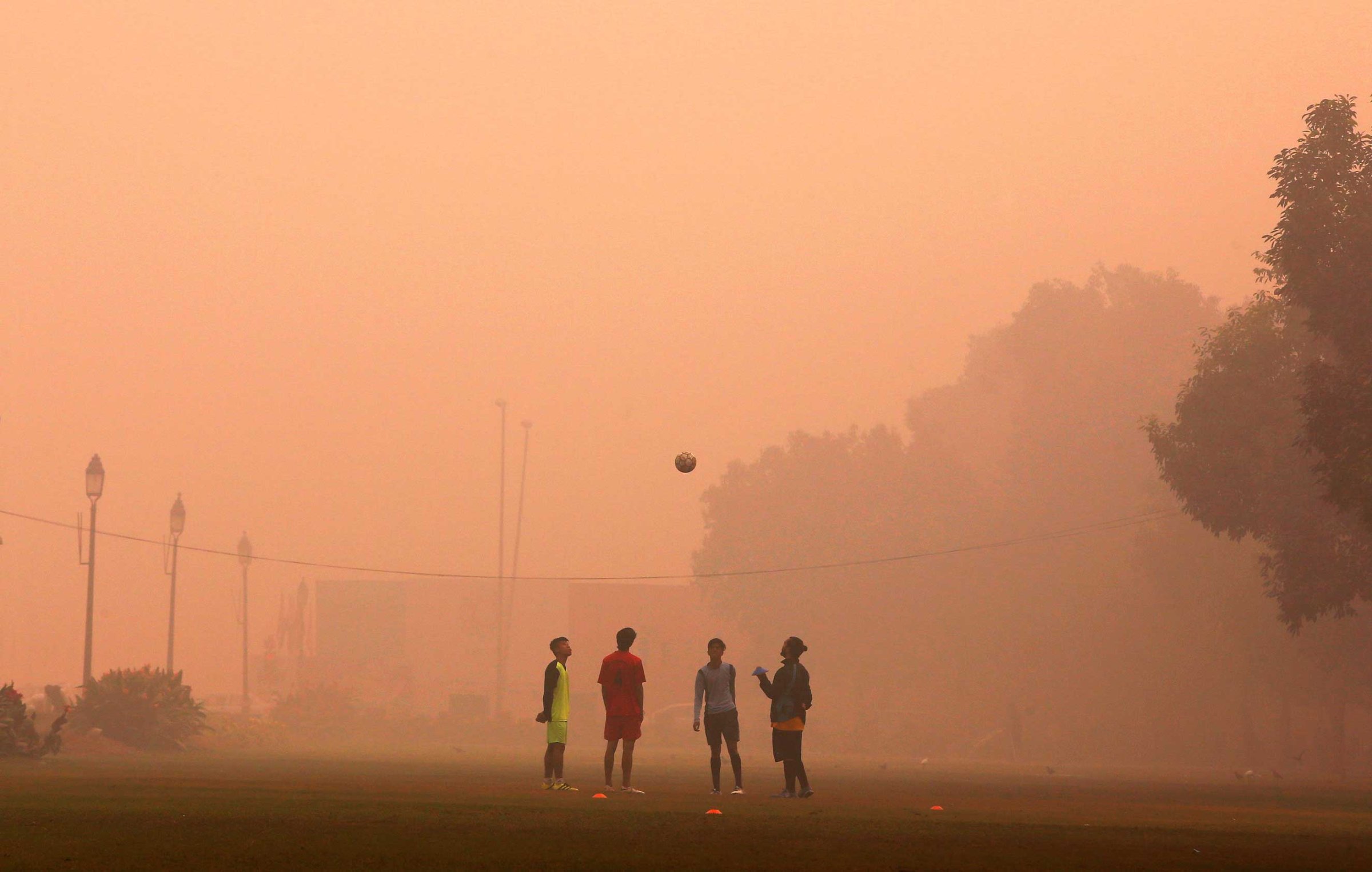
On many winter days in New Delhi, if you look at the weather app on your phone, it will sum up the forecast in one word: smoke.
Step outside, and it becomes clear why. As the temperature drops and wind speeds fall, allowing pollutants from the city’s swarm of cars–more than 9 million and growing–and fumes from nearby factories to linger in the air, the Indian capital is enveloped by a thick smog. Depending on how bad the pollution is, the haze fluctuates from a sickly yellow to a dark, cough-inducing gray. The effect is deadly, with one 2015 study blaming the city’s deteriorating air quality for as many 30,000 early deaths a year.
Those who can afford them have been buying antipollution masks and air purifiers for their homes. But many of Delhi’s 25 million inhabitants, like 45-year-old Vikas Jadav, have no choice but to spend hours outdoors, breathing the toxic haze on a daily basis. Jadav drives one of the city’s distinctive black-and-yellow three-wheeled taxis. The vehicle has no windows. From two sides, it is open to the elements. All around Jadav, cars and trucks belch out toxic petrol and diesel fumes. “I came here 10 years ago,” he says. “Every year, I find I cough more.” But there is nothing he can do about it. The only solution for him, he says, is to not think about it. “This is my work,” he says.
Delhi ranks high on a World Health Organization (WHO) list of cities with unhealthy levels of air pollution, but it is far from alone. WHO research found that 90% of the world’s population lives in areas with unsafe air-pollution levels. And it’s not just cities in the developing world, like Beijing, that face dirty air–Western metropolises like New York City and London are on the list as well. At the beginning of December, Paris was hit by some of the worst air pollution in a decade, leaving the Eiffel Tower cloaked in smog. For all the deserved focus on climate change as the planet’s major environmental threat, a much older one–bad air–is still a persistent danger.
Economic growth in places like Delhi and Beijing has led to the rapid construction of coal-fired power plants, quick factory construction and traffic-choked streets. Regulations–to the extent that they exist in these places–receive little attention from the officials charged with enforcing them.
Most European cities enjoy strong environmental protections, but they’ve still been hit by a wave of smog in recent years. Here the problem centers on the switch to diesel vehicles. Those cars–which drive along increasingly crowded streets–are actually better for the climate than gasoline-powered cars, but they emit more of the pollutants that directly harm human health. “In London, you can actually smell the pollution,” says Simon Birkett, the founder of the NGO Clean Air in London. “Go down Oxford Street, you can literally smell it.”
A slew of previous research has shown that poor air quality hurts the cardiovascular and respiratory systems, contributing to ailments like lung and heart disease. But scientists are gaining a better understanding of the damage that even low levels of pollution can do to the body. When fine particulates–tiny particles of air pollution that cause haze–enter the body, they can harm the brain and damage developing fetuses, among other effects.
Today some 7 million people around the world die prematurely thanks to air pollution, and the scale and seriousness of the problem has finally caught the attention of politicians. European cities like Paris and Berlin have implemented restrictions on vehicles to limit smog. London Mayor Sadiq Khan–who made the British capital’s worsening air pollution a key issue in his campaign–just committed to spending more than $1 billion on initiatives aimed at addressing the issue, primarily by overhauling the city’s thousands of buses. Diesel-vehicle drivers will soon need to pay $15 just to enter the city center.
Developing countries like India are still doubling down on polluting coal, arguing they need cheap energy to keep their economies growing. But public-health experts argue that air pollution exacts its own toll on the economy–the World Bank pegs the cost of bad-air-related deaths at about $225 billion a year. “You have to make the case that pollution is a big problem,” says Dr. Phil Landrigan, a pediatrician and environmental-health expert at New York City’s Mount Sinai Medical School. “You make the case on public-health grounds, you make a moral case, you make a business case.”
Air pollution, more than any other environmental threat, truly affects everyone. The rich and the poor still breathe the same air–which means we should all have an interest in cleaning up the skies.
–With reporting by NIKHIL KUMAR/NEW DELHI
More Must-Reads from TIME
- Donald Trump Is TIME's 2024 Person of the Year
- Why We Chose Trump as Person of the Year
- Is Intermittent Fasting Good or Bad for You?
- The 100 Must-Read Books of 2024
- The 20 Best Christmas TV Episodes
- Column: If Optimism Feels Ridiculous Now, Try Hope
- The Future of Climate Action Is Trade Policy
- Merle Bombardieri Is Helping People Make the Baby Decision
Write to Justin Worland at justin.worland@time.com